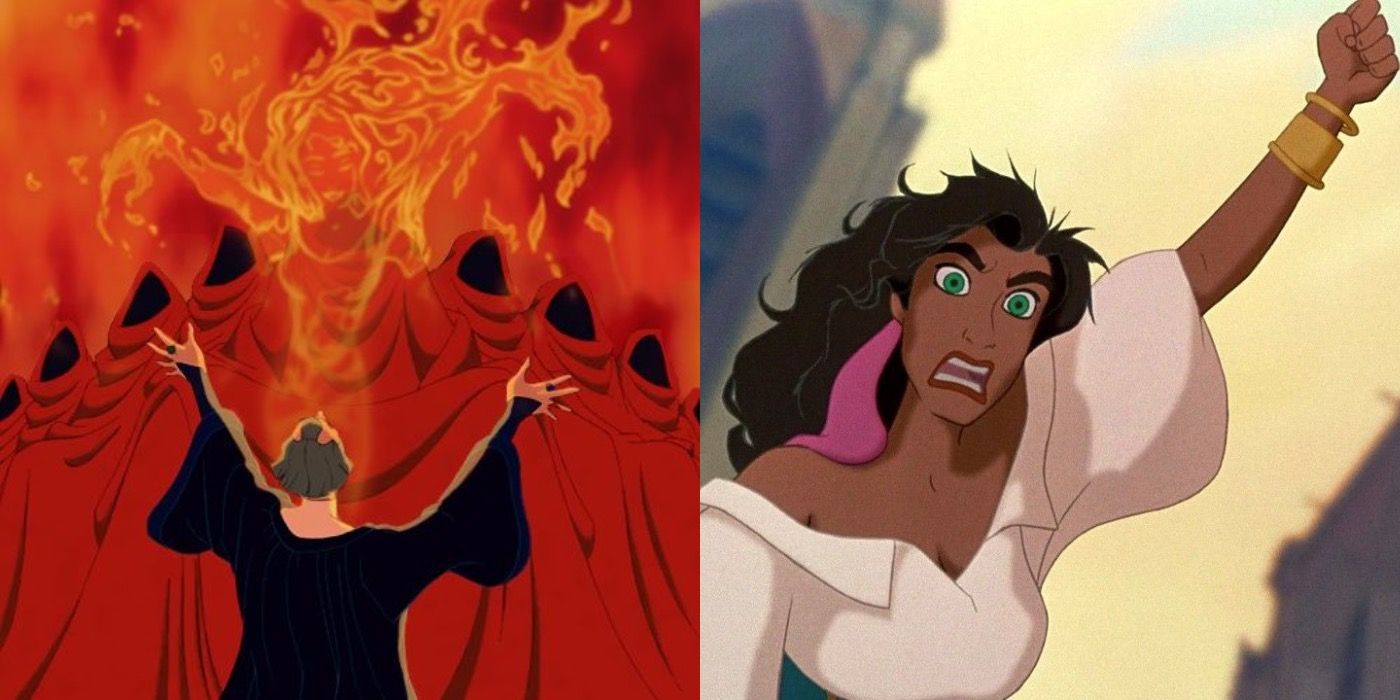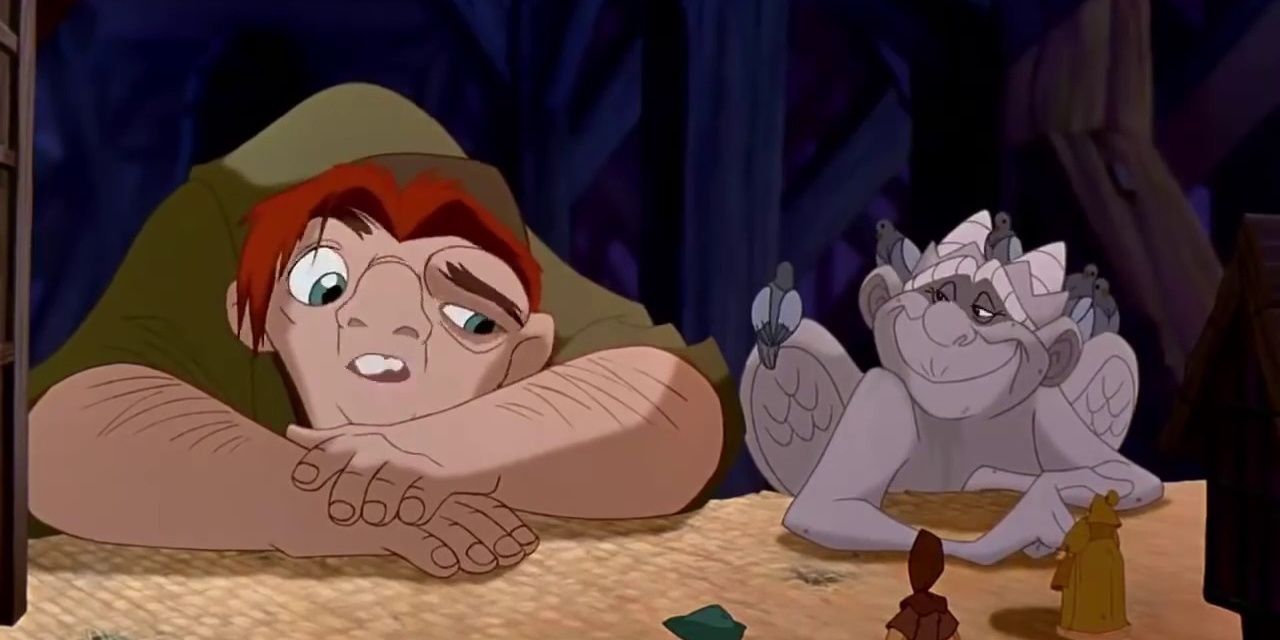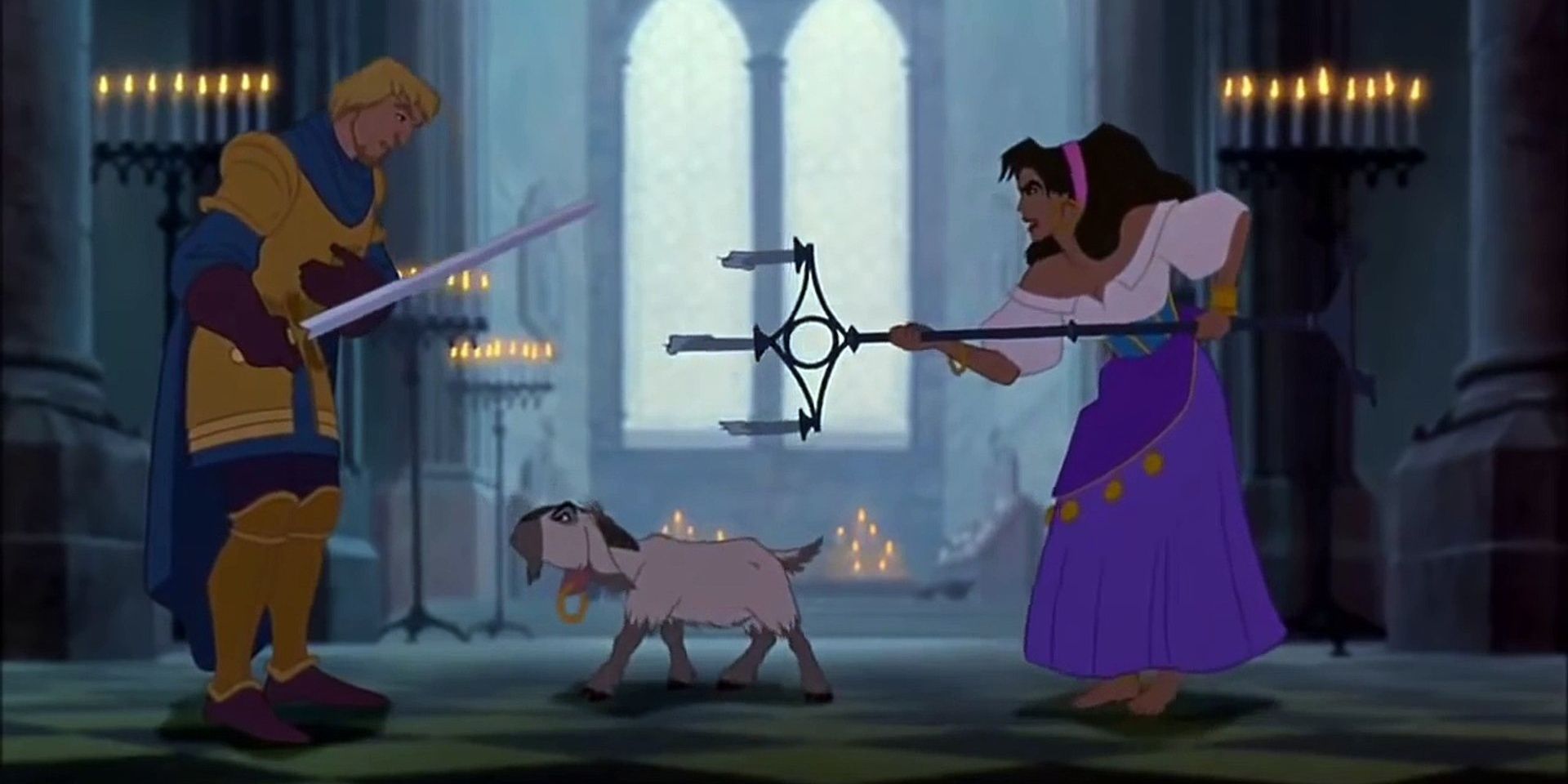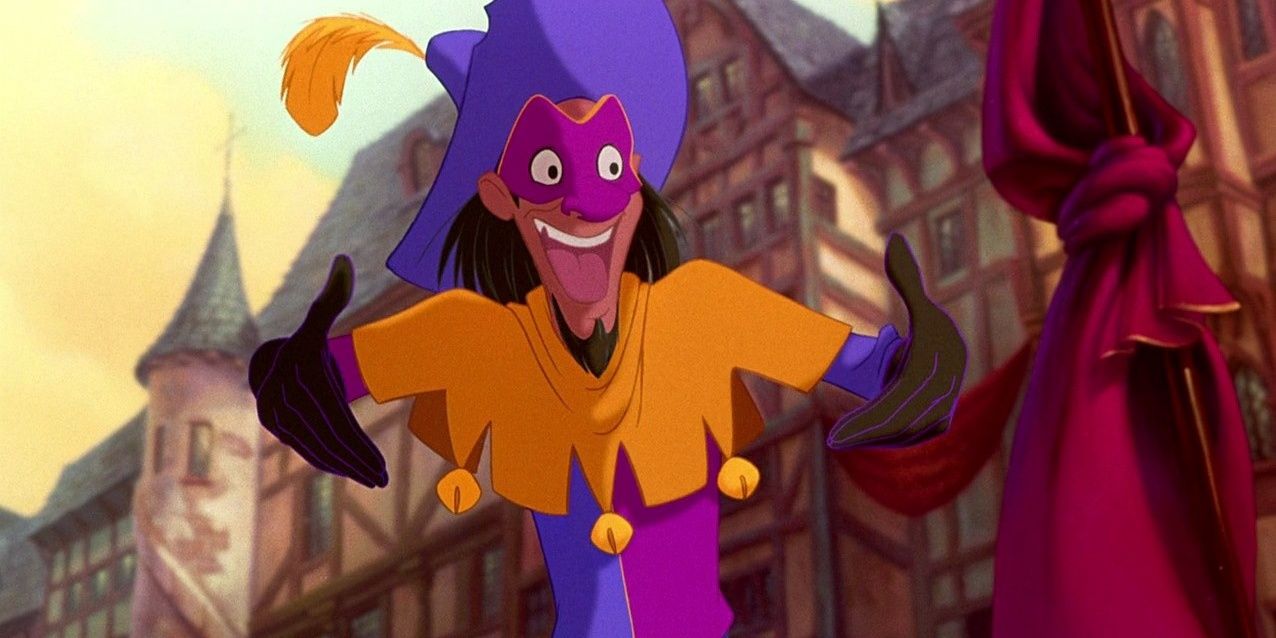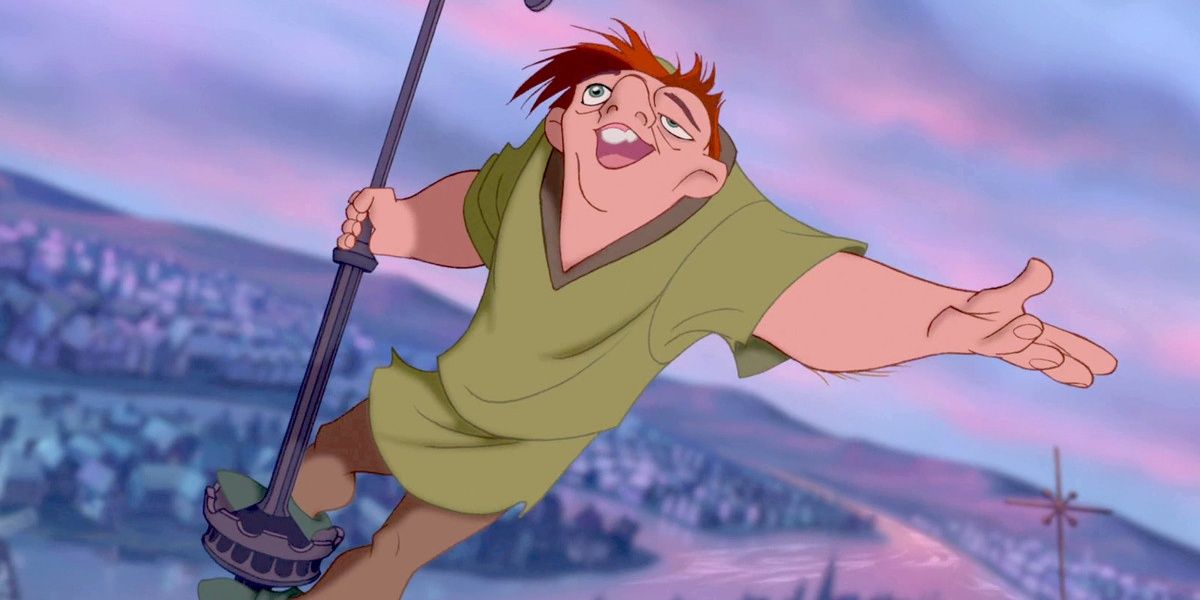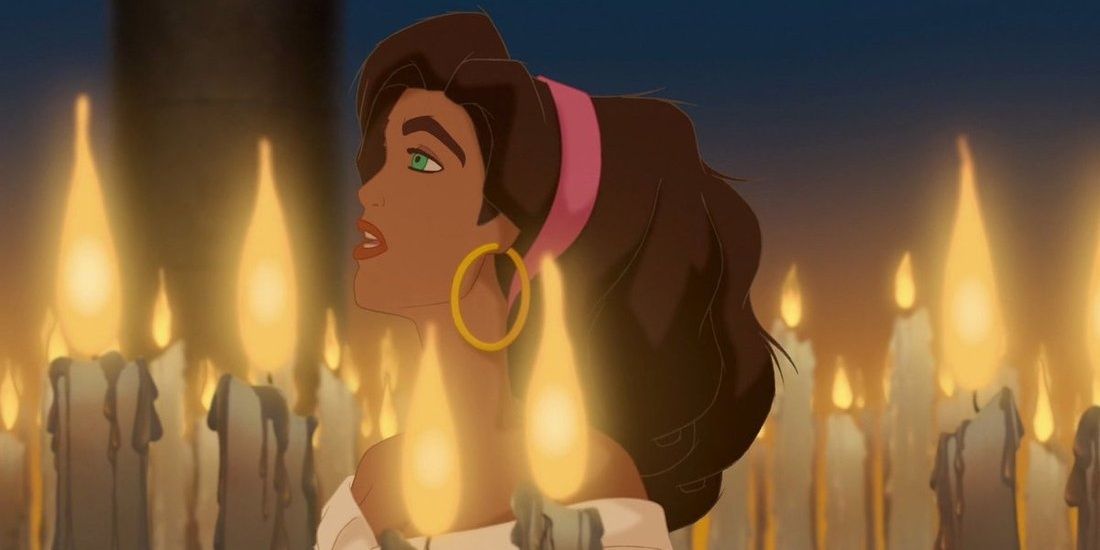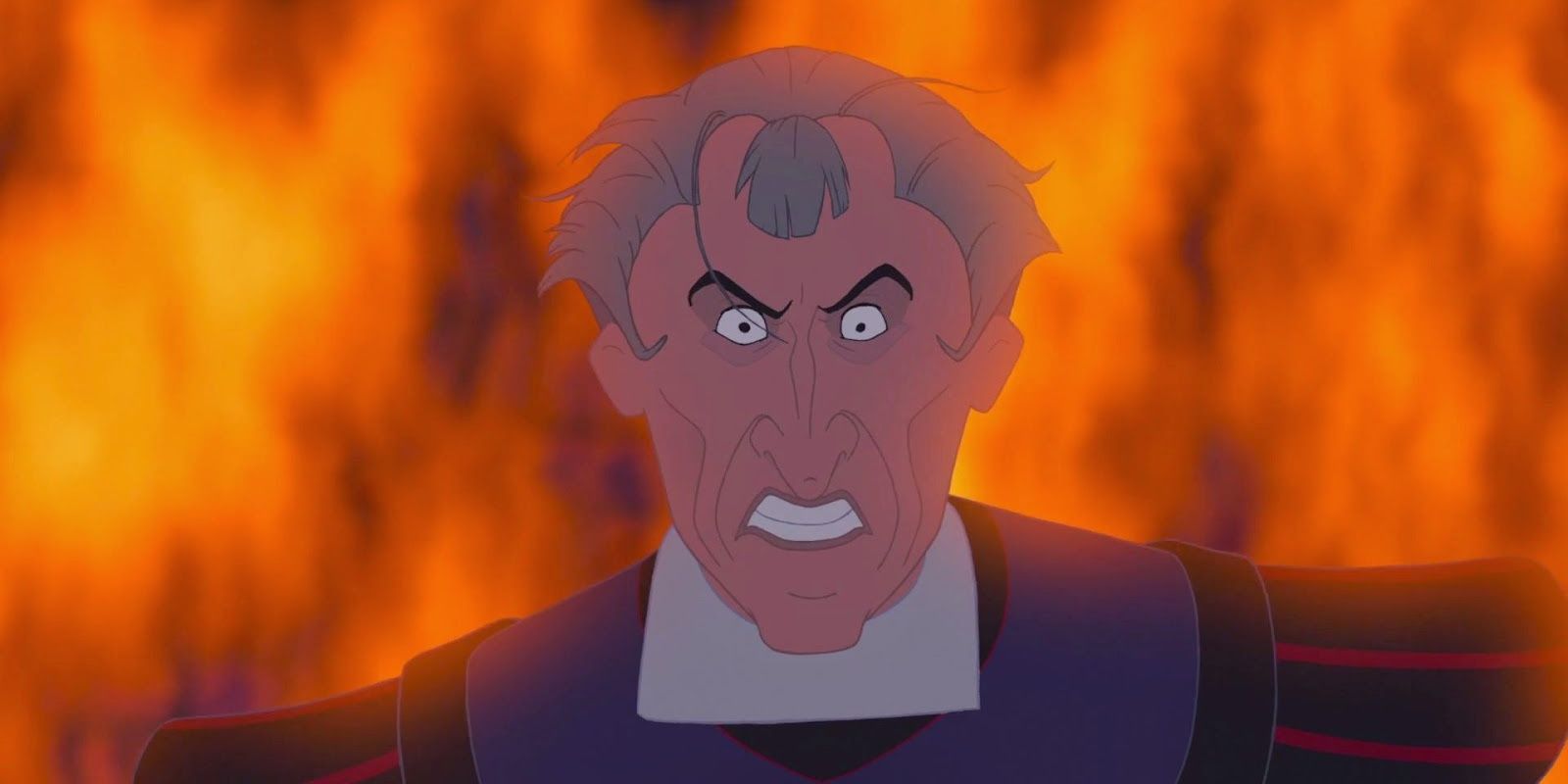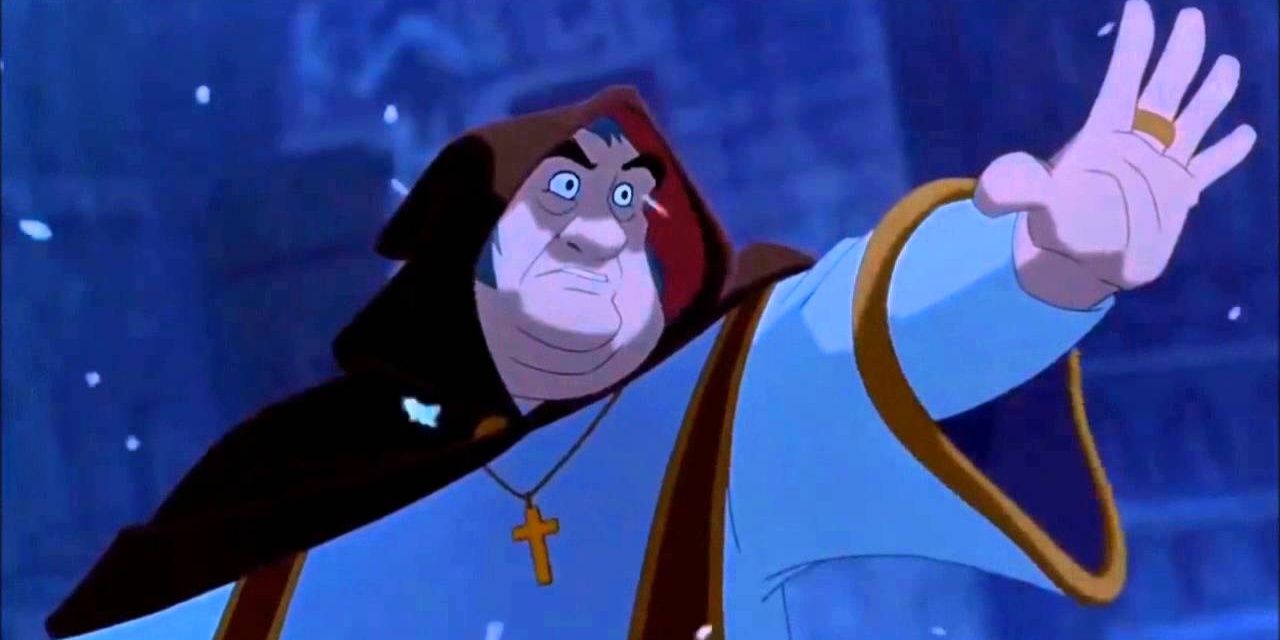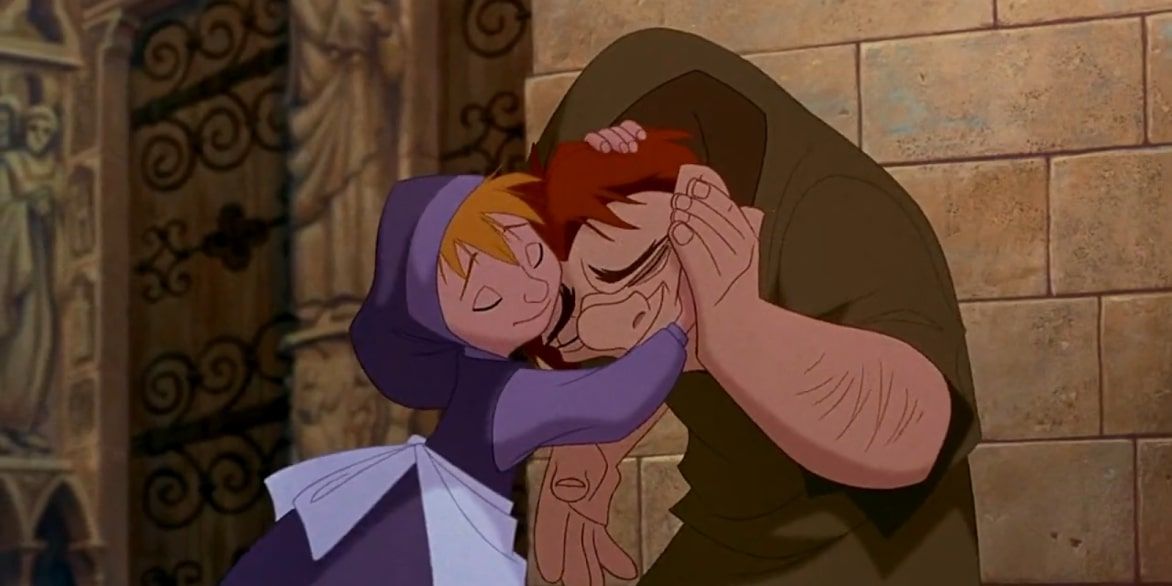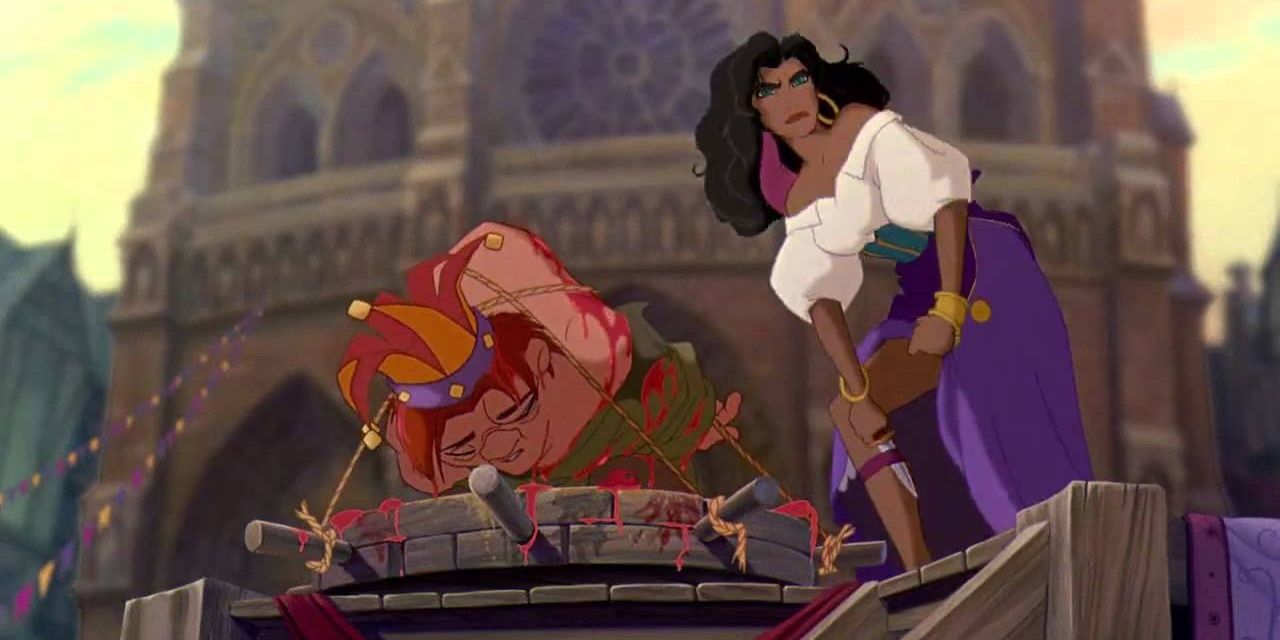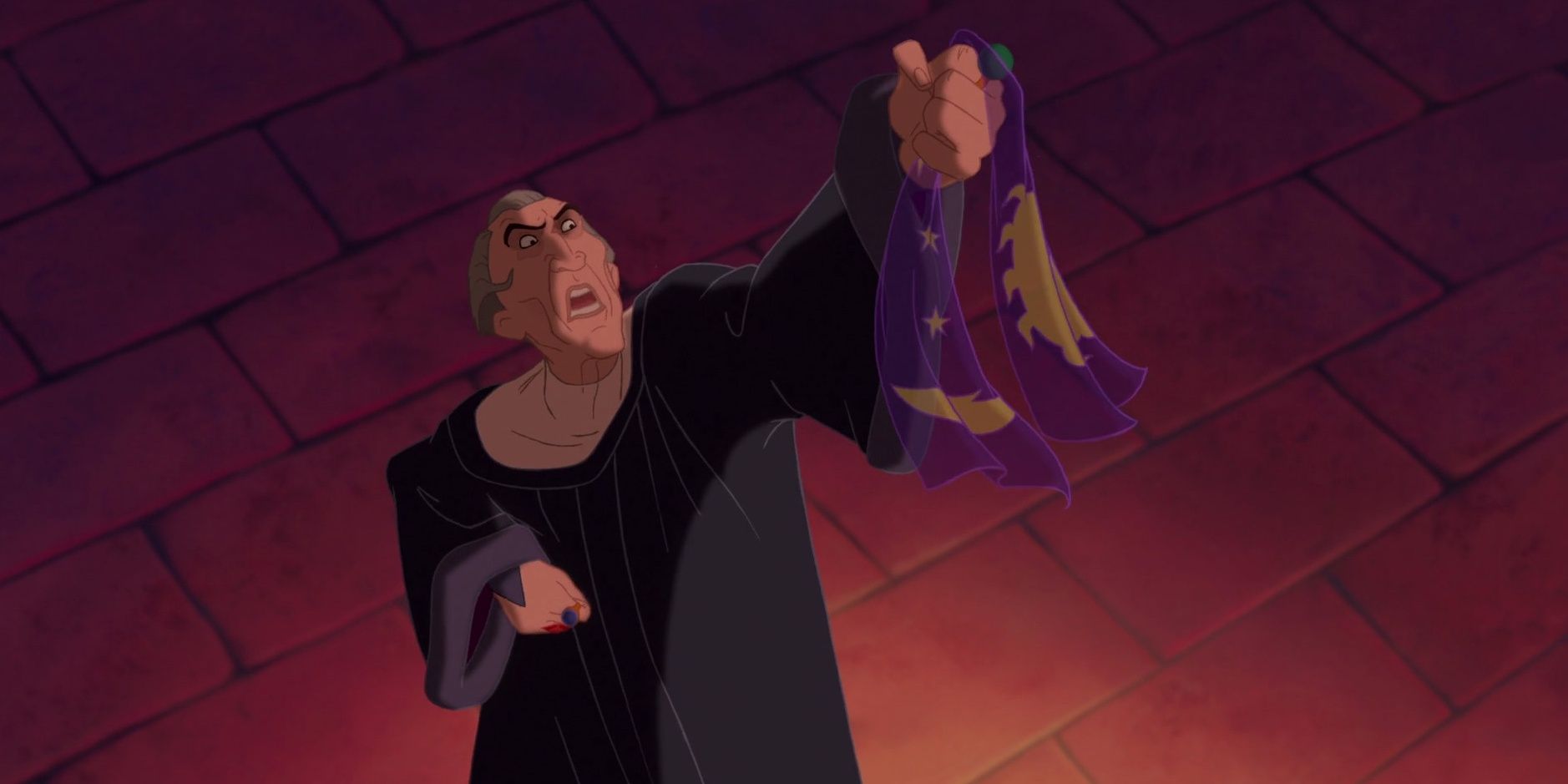Despite its lack of popularity amongst the other classic Disney Animation films from their Renaissance period, the 1996 animated musical The Hunchback of Notre Dame is a masterpiece work that tackled plenty of dark and adult themes while still retaining its family-friendly status. The Disney movie is loosely based on the novel by Victor Hugo and unlike the book, the film lost much of the violence and death that appears in Hugo's French gothic version, keeping the actions and characters in the animation firmly at a G rating.
The Disney film version follows the physically deformed, yet kind and gentle Quasimodo who acts as a bell-ringer at the Notre Dame Cathedral. Raised by the God-fearing Minister of Justice, Judge Frollo, Quasimodo spends much of his life mistreated by the judge who tells Quasimodo his appearance makes him a monster. As the film progresses the audience is introduced to a variety of likable characters who are an important part of the bell-ringer's journey, like the compassionate and independent Romani street dancer Esmeralda and her well-meaning romantic interest Captain Phoebus. Out of all the amazing moments in this powerful film, here are the ten best that truly stand out above the rest.
The Supportive Gargoyles
Best friends always make everything a bit brighter, and in a film that handles as many dark themes as The Hunchback of Notre Dame, some heartfelt moments are definitely required. When Quasimodo is feeling down and convinced that he's "not normal" and therefore can't attend the Feast of Fools festival, his supportive guardians push him to go and enjoy the world outside. It's one of the more lighthearted moments of the film and seeing how encouraging Victor, Hugo, and Laverne are to Quasimodo is a warm change from watching Judge Frollo's cruel mistreatment of him.
Phoebus And Esmeralda
Despite her poor disguise, no one but Phoebus manages to notice Esmeralda when she sneaks into the Cathedral. After following her inside, Phoebus's first meeting with the Romani dancer is met with plenty of reasonable suspicion and hostility by Esmeralda. As Phoebus is the Captain of the Guards for Frollo, Esmeralda is convinced that he's come to arrest her, and she attempts to keep him back with verbal and physical threats. After things get friendly between the two they are interrupted by Frollo, who demands that Phoebus arrests her, however, he refuses and says that she has claimed sanctuary in order to keep her safe. It's an important moment between two major characters, that also firmly shows that unlike the other soldiers Phoebus is willing to defy Frollo in order to do the right thing.
"Topsy Turvy"
Amid all the darkness in The Hunchback of Notre Dame, the Feast of Fools festival's "Topsy Turvy" song number is filled with upbeat energy and colorful visuals. Led by Clopin as he shows off the yearly festival that allows the Romani people to celebrate, viewers see the vibrant visuals and confetti, along with the shy Quasimodo attempting to hide from the townsfolk despite Clopin's repeated attempts to lure him out into the crowd. Though the festival eventually hits a sour note after Frollo's cruel soldiers incite a riot against Quasimodo, the festival's introduction is one of the more lighthearted numbers that paint the celebration in a positive light.
"Out There"
The song starts out with an introduction from Frollo as he callously manipulates Quasimodo into reaffirming the judge's beliefs that the bell-ringer is a monster who cannot leave the Cathedral as the world won't accept him. The amount of control and obvious gaslighting that Quasimodo is subject to is quite disheartening, but the song gains momentum once it switches to Quasimodo's solo part.
Though he starts with an examination of himself as an outcast, things start to get hopeful as he imagines what it would be like to be a part of the world below him. His desires along with the uplifting instrumentals definitely make this hero's song memorable.
"God Help The Outcasts"
Esmeralda's important song "God Help the Outcast" is a soft ballad that reflects the Romani dancer's hopeful prayer that someone, perhaps a higher power, will help bring an end to the mistreatment of her people. A recurring theme throughout the film is "who is the monster and who is the man?" The audience is shown how Frollo mistreats those he deems unworthy of God's love, which is anyone in the film who is different. Esmeralda's plea is a powerful visual of her desperation for justice for the Romani people and a reminder that the outcasts of the film deserve fair treatment.
Quasimodo Vs Frollo
After watching the wicked Judge Frollo spend the film manipulating and mistreating Quasimodo as well as the townsfolk, it's a powerful moment when the people finally rise up and fight for the justice they deserve. As viewers watch Quasimodo finally stand up to Frollo and tell him he sees that the true cruelty and darkness comes from people like him, there's a sense of satisfaction in seeing the bell-ringer stand up to his abuser and take ownership of his own life. He stops Frollo's attempt to murder Esmeralda and lets his former parental guardian be consumed by his hatred and destroyed by his own darkness.
The Intro Sequence/"The Bells Of Notre Dame"
The Hunchback of Notre Dame's introduction scene sets the tone for this darker Disney Animation film. Audiences are introduced to many important characters such as Clopin, Frollo, and the Archdeacon, and right away their true nature is shown. After chasing down the innocent Romani woman who's trying to protect her baby, the villainous Frollo kills her, convinced she's carrying stolen goods. Before he can murder her baby who he's convinced is a "demon" Frollo is stopped by the Archdeacon who guilts him into raising the child as his own in repentance for his actions. It's certainly a memorable scene and a powerful yet tragic opener for the film.
Acceptance
After defeating the cruel God-fearing Judge Frollo, Esmeralda and Phoebus exit the Cathedral and are greeted by the cheering townsfolk. Though Quasimodo does not follow them, Esmeralda turns back and pulls him out of the darkness and into the light.
Initially cautious due to his prior mistreatment, a young girl eventually approaches him and embraces him with a hug, before Clopin declares "cheers for Quasimodo." Finally accepted, he is cheered on as the town continues to celebrate the defeat of the judge. Seeing Quasimodo finally shed his identity as an outcast, is definitely a memorable moment.
Justice!
When Quasimodo falls victim to the cruel soldiers and townsfolk at the Feast of Fools Festival, Esmeralda is the one who steps up and tries to protect Quasimodo from the public mockery. When Judge Frollo demands that she stop, Esmeralda refuses, and frees Quasimodo from his restraints, demanding justice from Frollo for his mistreat of Quasimodo as well as the Romani people. When he continues to threaten her, Esmeralda declares that Frollo is the festival fool and uses magic trick illusions to escape being arrested on his orders. The scene shows Esmeralda as a strong and independent character, as she is the only one brave enough to openly defy Frollo and stand up for what's right.
"Hellfire"
The wicked Judge Claude Frollo's song "Hellfire" is definitely the most standout number amongst those in The Hunchback of Notre Dame. As a villain's song, it explores plenty of dark themes on a mature level not typically seen in Disney Animation films. As Frollo reflects on his lust and weakness at falling victim to sinful feelings, he declares that his lustful desire is the fault of the "the witch." Frollo comes to the conclusion that Esmeralda must be destroyed and "taste the fires of hell" if Frollo cannot have her for himself. In reflecting on Frollo's struggles with his commitment to God and his belief that he can commit evil acts in the name of good, Disney addresses the complexity of religion and faith while still keeping everything family-friendly. "Hellfire" is just as thought-provoking for adults as it is for children.

